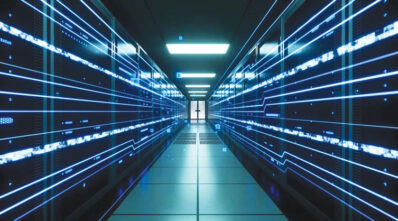Sustainable electrical equipment is required for better efficiency at a data center
By Admin October 1, 2022 3:39 pm IST
By Admin October 1, 2022 3:39 pm IST

This article emphasises that the energy industry should explore various strategies to improve reliability, increase efficiency, and drive sustainable practices as part of its energy management goals.
Data centers consume 1-2 per cent of the world’s electricity, and demands are only growing due to the rise of work from home and the growth in data consumption. Tremendous amounts of data are used to stream entertainment and engage in web conferences, which demand increased networking, processing, and storage capacity.
Also, although roughly three billion people have access to the Internet globally, about 30 billion machines are attached to the Internet, as more and more industries become digitalised, data centers have become essential beyond just delivering services to people, but for the sharing of data between machines.
Many giant tech companies at the heart of this exchange have aggressive sustainability goals focused on carbon reduction. Microsoft announced plans to go carbon negative by 2030, and by 2050 plans to remove all the carbon the company has emitted since it was founded in 1975. With grid edge solutions such as microgrids and battery storage systems, as well as direct current (DC) power transmission, there are many opportunities for operators to maximise their use of renewable generation while reducing their use of fossilfuel- based energy sources.
Major challenges in the industry
The challenges associated with the growth in data centers are manifold. First, they require large volumes of power, high reliability and exceptional power quality. Meeting this demand can put significant pressure on power grids. In countries such as the Netherlands, Singapore, and Ireland (where this sector consumes roughly 13 per cent of the electricity on the network), authorities have sometimes halted the construction of data centers due to power requirements. At the same time, key industry players are looking toward renewable energy as their primaryelectricity
source, in keeping with their goal of minimising their carbon footprint. With so much demand on the grid amid the transition to clean energy, this can create conflicts. External pressures have pushed operators to consider new sources of renewable energy generation. They also need to continuously ensure the availability of power, which can present challenges due to the intermittency of renewable energy generation.

Data centers typically have several greenhouse gas contributors from construction to operations, including the diesel generators that provide backup power, and the use of grid-connected fossil fuel generation sources for cooling, computing and other operations. Owners and operators of these facilities, as well as the contractors involved in constructing them, are looking to the energy industry to explore various strategies to improve reliability, increase efficiency, and drive sustainable practices as part of their energy management goals.
The ageing grid and power disruptionsAdding sustainability at data centers
Higher server density for high-performance computing applications like artificial intelligence (AI) and machine learning (ML) has led to renewed interest in liquid cooling. As equipment becomes more sophisticated, the amount of rack power and heat generated by the hardware can require more cooling capacity. Business mandates have pushed the industry to explore new technologies that integrate renewables into the cooling infrastructure. With more efficient uninterruptible power supplies (UPSs) and equipment capable of operating at higher voltages, data centers can lower their energy consumption. Digital techniques for traditionally “analogue” technology like switchgear allow for greater efficiency and ease of monitoring energy consumption. More efficient power and cooling infrastructure choices can also result in a lower operating budget.
For years, operators have explored moving to direct current (DC) for power distribution within the data center. A DC system makes integrating solar or fuel cells easy to produce power and may allow more space for server racks and cooling equipment. With fewer conversions from AC to DC and back again, it may be possible to minimise the amount of energy loss and heat generated. However, there are a few obstacles that shield DC power distribution from wider adoption: limited supplies of air conditioning units, lack of experience among data center operators, shortages of commercially available IT equipment, and a need for standards from electrical authorities around arc flash prevention, grounding systems, system voltage, and DC cabling and other technical requirements.
Although the industry has achieved many sustainability goals over the past decade, little attention has been paid to the construction side of the equation. The carbon embedded in the concrete and steel that go into building a new data center can be driven down in the early development phase by using existing structures where possible, using modular equipment that minimises the need for concrete foundations, designing alternatives to carbon intensive structural materials, and introducing sustainably manufactured equipment.
Data centers can also operate more sustainably by developing an on-site microgrid coupled with renewable energy generation sources such as solar or wind farms, which could help offset the need for grid connected power sources.
Expertise shared by Dave Sterlace, Strategic Accounts Manager, Hitachi Energy
https://www.hitachienergy.com/
We use cookies to personalize your experience. By continuing to visit this website you agree to our Terms & Conditions, Privacy Policy and Cookie Policy.